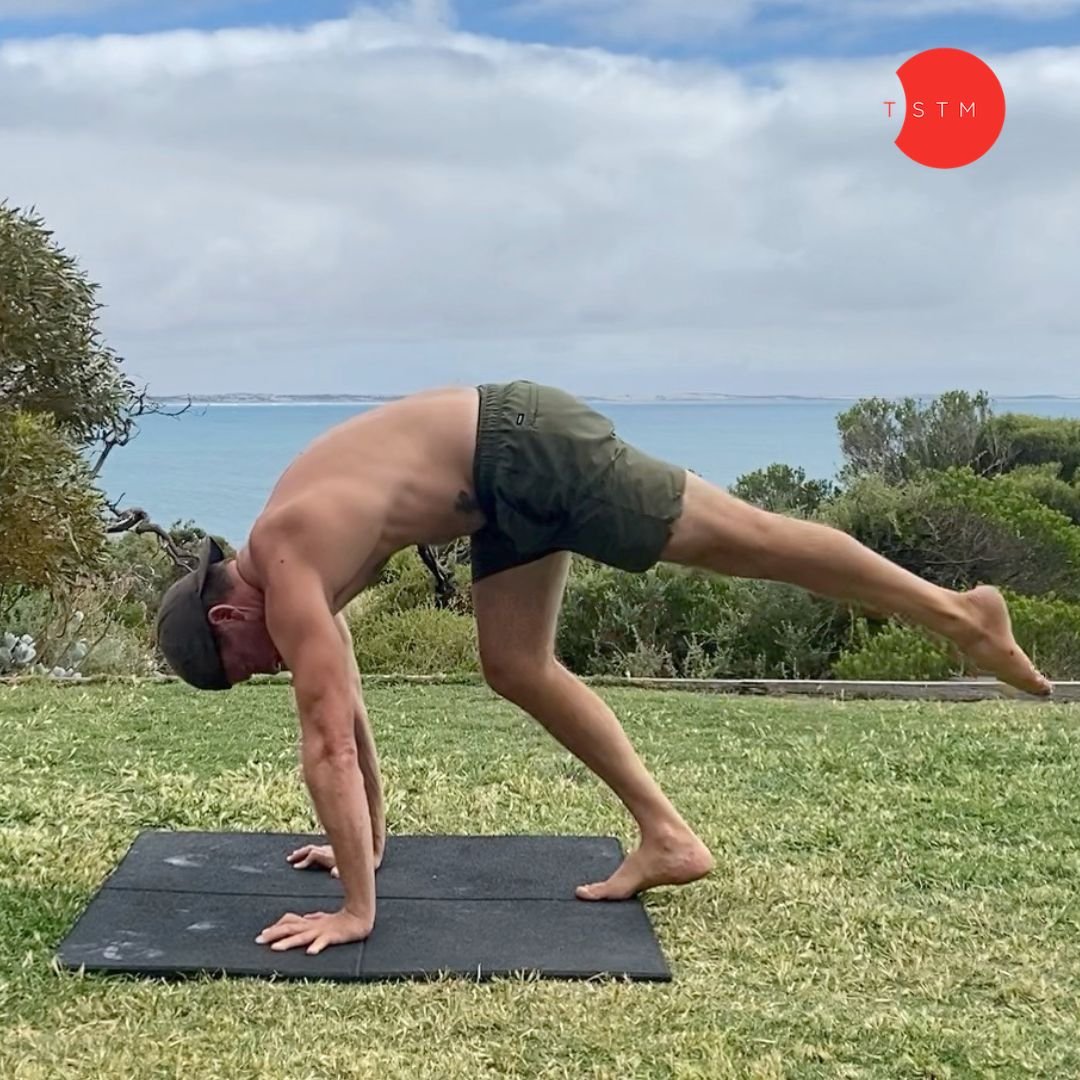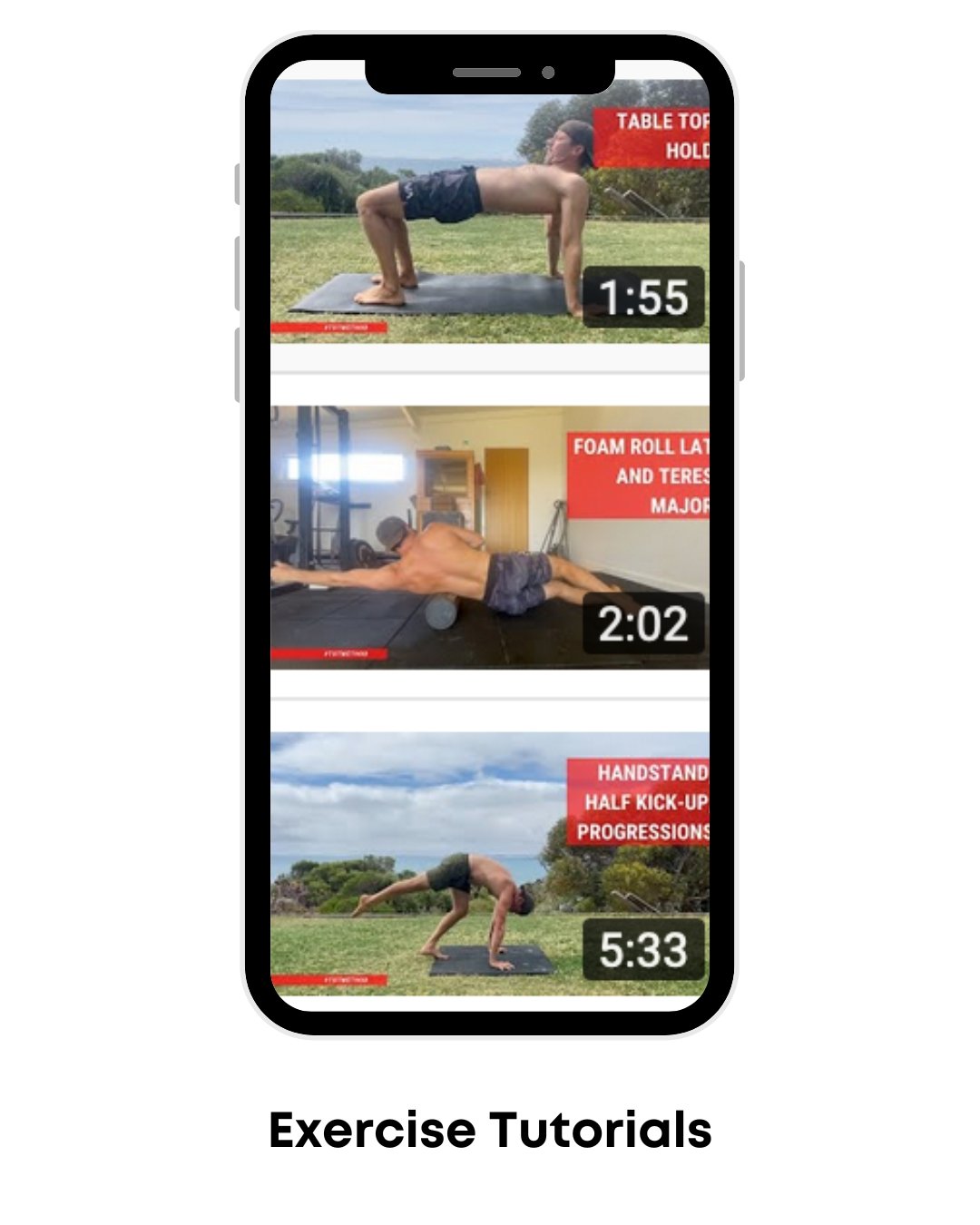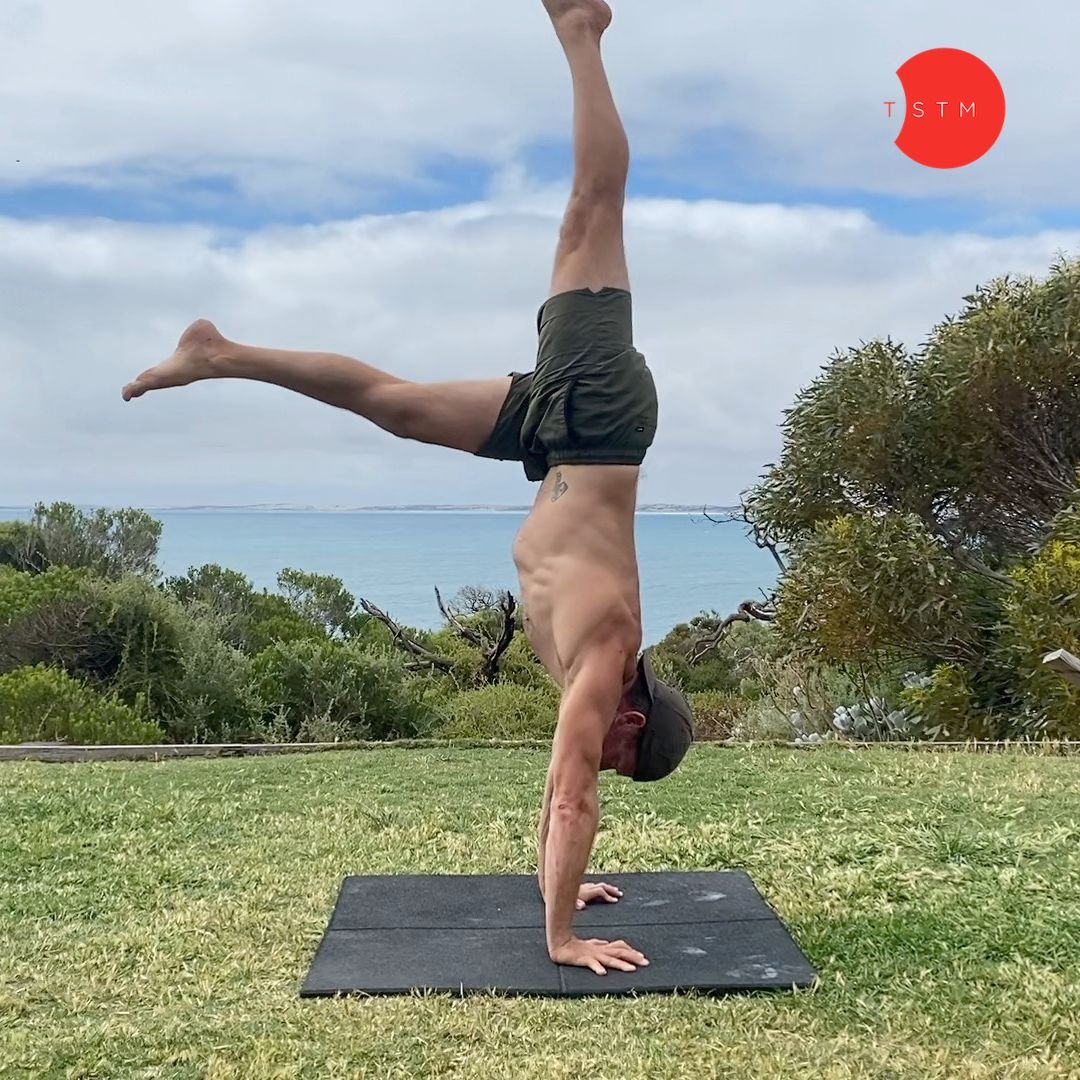FREE Adult Beginners Handstand Program
Designed for adults who want to learn to handstand.
A lot of adults want to learn to handstand, but they have a fear of getting hurt, or they don’t know where to start.
Maybe you’ve tried kicking up to a handstand against a wall, attempted handstands in your yoga classes, or watched countless YouTube tutorials. But none of it seems to be helping.
Learning to handstand can be frustrating as an adult, and it often feels like you’ll never be able to master it.
At TSTM, we believe it’s never too late to unlock new skills like handstands.
We’ve helped hundreds of adults learn to handstand.
This is why we created the Adult Beginners Handstand Program and give it away for FREE.
What are the goals of the ABHS Program?
We’ve defined several key milestones in each phase as part of the program. Learning to handstand is a journey, and it helps to define milestones along the way.
The milestones for completing phase 1 are:
✅ Walk your chest to the wall in a Wall Facing Handstand.
✅ Hold the BBLD and FBLD for 45+ seconds
✅ Hold the wall facing 45-degree Handstand for 45+ seconds
The milestones for completing phase 2 are:
✅ Hold 60sec Chest to Wall Handstand
✅ Feel comfortable Cartwheeling out of a handstand
✅ Have a good understanding of how to kick up to handstand (this doesn't mean you need to be able to kick up and hold a handstand; it is more about understanding the critical aspects of the kick-up).
This might sound like a lot, but the program's goal is to build the capacity to accomplish these milestones gradually.
The Adult Beginner Handstand Program:
1. General Physical Preparation
Preparing the body for the demands of handstand training. We must continue to build the capacity required to meet the physical demands of the training volume, intensity and frequency.
2. Specific Conditioning
Progressively strengthen the joints, muscles, and connective tissues and build body awareness for handstands. This also includes having the confidence to fall out of a handstand safely.
3. Rebalance
We are building the strength, control and awareness to balance on your hands.
4. Kick-ups
Start developing the skill of kicking up to handstand.
These elements are a continuing practice throughout the handstand journey, not just at the beginner's level.
As you progress and learn more advanced handstands, you must continue to work on all four elements.
This adult beginners program covers beginner drills in each of the above elements.
Program Details
There are two phases of training.
Each phase is six weeks long.
There are two sessions per week in each phase.
Each session is roughly 60 minutes of training.
Equipment List:
You will need to have access to the following list of equipment:
• A foam roller and an orb ball are also suitable investments.
• Broomstick or something similar.
• A set of Parallettes (or some heavy kettlebells or hex dumbbells)
• Light dumbbell weights (2-10kg)
• Pull-up bar (or something to hang from)
• A wall you can do handstands against
This equipment can be purchased online and set up in your home, and most gyms will have this equipment.
Adult Beginners Handstand
FREE
$150.00AUD
How the program works?
Receive two 6week training phases.
A deep dive into all the program details.
Video tutorials for all exercises.
When you download the Adult Beginners Handstand Progeam, you’ll have access to all these goodies immediately.
ABHP - Phases 1
In phase 1, the primary goal is to start building confidence in the handstand. The primary moves for this are 45-degree wall-facing handstands and wall walk-ins.
By the end of phase 1, you want to be comfortable:
✅ Walking your chest to the wall in a Wall wall-facing handstand.
✅ Holding the BBLD and FBLD for 45+ seconds
✅ Hold the wall facing 45-degree Handstand for 45+ seconds
For some people, this might take longer than six weeks.
We break the handstand into alignment, strength, balance and overall conditioning. Each of these elements is key to unlocking the handstand.
We want to take this slow and allow the body to adapt over time. You will notice that the hold times, sets and reps change as the weeks continue. This will enable you to gradually prepare your joints, muscles and connective tissues while increasing your capacity.
In phase 1, you'll also begin learning the components that make up the handstand. Posterior pelvic tilt (PPT), shoulder elevation, body alignment, shoulder flexion, and balancing on your hands.
At the same time, we also want to do our best to maintain structural balance. Handstand training requires a lot of straight arm shoulder elevation, which can lead to an imbalance in the muscles of the shoulders. Left unchecked, it can often lead to wrist, elbow, neck, and shoulder pain.
To balance out the shoulder elevation, we use movements like prone arm raises, reverse flies, shoulder external rotations, dip shrugs, and tabletop holds.
ABHP - Phase 2
In many ways, phase 2 is very similar to Phase 1, but you'll notice the reps and hold times increase.
We also introduced the wall-facing cartwheel out of the handstand and handstand kick-up drills.
By the end of phase 2, you want to be comfortable:
✅ Holding 60sec Chest to Wall Handstand
✅ Cartwheeling out of a handstand
✅ Have a good understanding of how to kick up to handstand
(this doesn't mean you need to be able to kick up and hold a handstand; it is more about understanding the critical aspects of the kick-up).
For some people, this might take longer than six weeks.
We continue building endurance in the back body and front body line drills.
We also continue to work on the wall walk-ins as a conditioning and confidence drill, which allows you to achieve the 60-second chest-to-wall handstand hold.
Learning to fall out of the handstand safely helps us overcome the fear of handstands. The fear is often associated with the inability to control the falling process and potentially getting hurt. We use the wall-facing cartwheel to deliberately fall out of the handstand and learn to land safely on our feet.
In this phase, we introduce handstand kick-ups with the half-kick-up progressions and the push-up slide-to-pike drill. Kick-ups are a skill that requires a lot of patience and practice. It’s important to start introducing kick-ups as early as possible.
Finally, we continue to maintain structural balance with drills like prone arm lifts, hanging, tabletop to seated, trap 3 raises, and shoulder external rotations.
You get both phases for:
FREE
$150.00AUD
🌟 Why Choose Our Program?
✅ Gymnastics Expertise: Our program has been crafted by coaches passionate about gymnastics strength training and understanding the nuances of body control, balance, and strength. We've distilled years of experience into a comprehensive program that will guide you toward achieving the perfect pistol squat.
✅ Progress at Your Pace: Our program caters to all skill levels, whether you're a complete beginner or an intermediate adult gymnastic skill seeker looking to refine your skills. Each program phase builds upon the last, offering a structured and adaptable approach to skill acquisition.
✅ Sustainable Training: We don't just focus on the pistol squat alone. Our program integrates a variety of gymnastics-inspired exercises that enhance your overall body awareness, flexibility, balance, and strength, setting the stage for your pistol squat success.
✅ Comprehensive Workouts: Unleash your body's potential with carefully curated workouts that focus on building the balance, strength and flexibility required for the pistol squat. Our workouts are designed to maximize your progress while minimizing the risk of injury.
✅ Video Tutorials: Visual learning is powerful. Our program includes detailed video tutorials that break down every aspect of the skill. You'll have a front-row seat to proper execution, ensuring you understand and master each technique.
✅ Personalised Support: We're here for you every step of the way. If you have questions, need feedback, or want to share your progress, our dedicated support team is just an email away.
FAQ’s
What are the prerequisites?
The only prerequisite for AHBP is that you're not carrying any injuries.
If you've got an injury and want help fixing it, don't hesitate to contact us for individual design coaching.
What are the commitment levels?
2 x 60min sessions per week
12 weeks of training - This depends on your level of progress, constancy, and lifestyle factors.
Can I combine handstand training with my other training sessions?
Yes. We recommend doing something other than a high-volume upper-body session 1-2 days before these sessions. If you have upper body DOMS, it will make the ABHP less fun, plus the quality of your training will be impacted.
It is best to structure your training to do lower body, cardio, or something light on the upper body muscles the day before ABHP sessions. You can do heavy upper-body strength training on the same day as ABHP, but do the heavy lifting first.
Can I train handstands more than twice per week?
Yes, you can. But, for most adults, it is best to start with two weekly sessions and gradually increase the frequency. Pay close attention to your recovery and how your wrists, elbows and shoulders feel.
When we increase the frequency, we can sometimes apply too much stress to the joints, muscles and connective tissues. This can lead to pain or even injury. So take it slow and listen to your body.
Can I use a phase for more than six weeks?
You certainly can. Spending more time on a handstand phase can be helpful, especially if you’ve not yet accomplished the milestones.
Take your time with the handstand journey. You can take it slow and enjoy the process. Putting in the work now will speed up the process down the path.
What if I cannot do one of the exercises?
Bugger! You might need to regress the movement if you have trouble with a particular exercise. Could you review the previous phase's exercises and revisit the progressions?
Flexibility or strength limitations can often stop us from performing specific movements. Try to figure out what’s holding you back. If it's strength, how can you build more strength in this area? If it's flexibility, what stretches can you train to increase flexibility? Check out The Sustainable Training Method YouTube channel for ideas.










